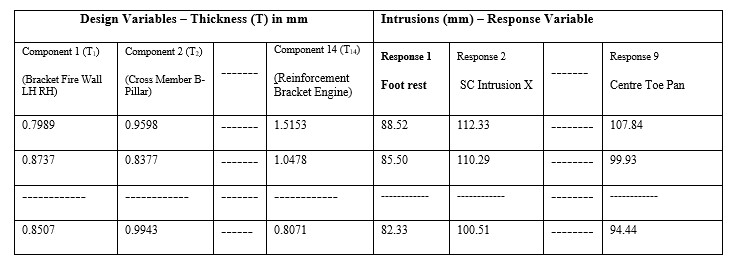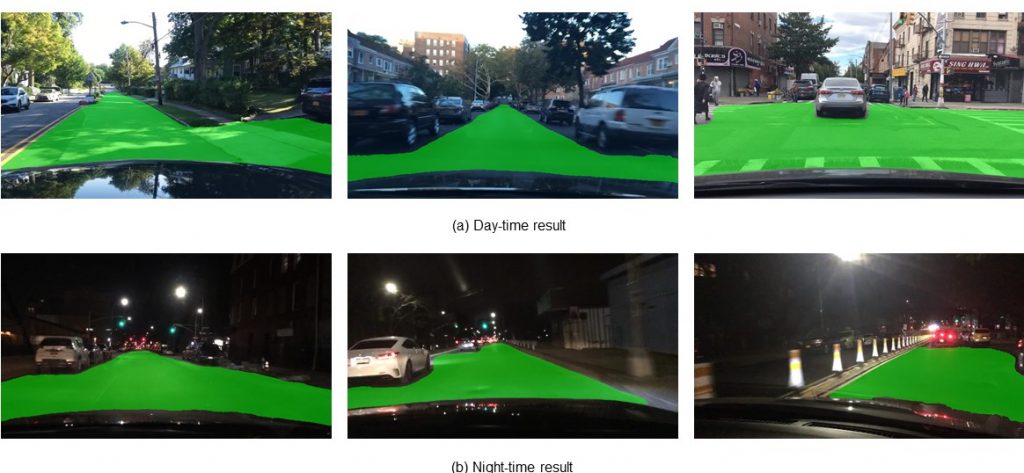Data Science and Artificial Intelligence (AI) skills for Mobility Engineers
Introduction:
Automotive industry increasingly relies upon digital tools to quickly turn new ideas into products for their customers. Getting from concept to market faster provides a competitive advantage. These digital tools have become increasingly more powerful and sophisticated with the emergence of Data Science (DS), Artificial Intelligence (AI) and Machine Learning (ML) [1]. The application of DS, AI and ML in automotive product development allows us to make complex decisions at an early stage when very limited data is available. How can automotive product design engineers advantageously use AI-assisted decision-making during product development?
Automotive product functions are increasingly delivered through a combination of hardware and software [2]. Customers expect the performance and functionality of products to be enhanced by seamless connectivity and intelligent adaptive features. The application of AI and ML allows to analyse large amount of data coming from a product performing in the field. The analysis provides insights that helps automotive companies to take actions and dynamically optimize the performance of their products. Analysis of field failure data enables preventive maintenance and improves utilization of vehicles. Analysis of driving behaviour of the driver can help auto insurance companies to optimize their premiums. How can automotive product design engineers learn to leverage AI and ML to enhance the performance of their products?
With the emergence of connected, autonomous, shared and electric vehicle technologies, the technology complexity of the automotive products is rapidly rising. The automotive product design engineers find it increasingly difficult to make the technical decisions that are critical to the vehicle’s performance. These critical decisions are invariably trade-offs between performance attributes that are often conflicting in nature. A typical vehicle development project involves meeting various performance (Acceleration, Fuel Economy, Crash, Durability, Aesthetics, etc..) and regulatory requirements (Emission, Safety etc) while meeting the stringent targets of Time, Cost and Performance (TCP). We demonstrate the benefits of AI – Assisted decision making in automotive product development and emphasizes the need for mobility engineers to get trained in Data Science and AI. We discuss four technical case studies spanning across different stages of the automotive product development. Figure 1 shows, how the benefits of AI can be realized at various stages of the Product Development (PD) gateways.

Figure 1 : Benefits of AI – Various Stages of the Product Development
Technical Case Study 1 – Improved Customer Focus through Deep Learning based Customer Sentiment Analysis
Customer focus is key to product innovation. It is vital for the success of the Product Development (PD) team to precisely understand their consumers’ needs and ensure that their product meets the expectations and reaches the targeted sales volumes. Quality Function Deployment (QFD), customer interviews, customer surveys are traditional methods of understanding customer requirements and expectations. Today, a vast amount of information is available on various social media platforms, namely, blogs, forums, twitter, automotive websites, etc., regarding customer expectations and their feedback on different products currently available in the market. Conventional methods fail to derive insights from the available huge volume and variety of structured and unstructured data and there is a strong need to adopt advanced machine learning-based methods. Machine Learning based Customer Sentiment Analysis, when augmented with the traditional methods, will assist in “arriving at the right feature content and creating a plan for the future products “.
In the past, experts have tried to apply NLP techniques to derive insights on the customer requirements pertaining to automotive platforms. Shukri et al. [3] performed Twitter-based automotive customer sentiment analysis related to BMW, Mercedes, and Audi Vehicles. Stefan Stieglitz and Nina Krüger [4] analyzed more than 700,000 tweets that spanned over 19 weeks to study users’ sentiment about Toyota. In 2014, Florian Heimerl et al. [5] highlighted the use of word cloud in effectively performing text analysis tasks.
In one of our recent projects, we recognized the critical performance attributes to be the most frequently occurring bigrams of the text corpus. A corpus of customer reviews on “Automotive Passenger Car – Monocoque Platform” is obtained from different automotive websites. A total of 4375 reviews were gathered from relevant websites. Figure 2 shows the word cloud obtained on processing the text and performing a word frequency analysis. Table 3 gives the feature-wise comparison of customer sentiment pertaining to various vehicle makes
|
Customer Sentiment |
||
| Make | Happy and Excited |
Improvement Required |
|
A |
Design, Handling | Storage, Ride |
|
B |
Infotainment, Storage |
Connected, Ride |
|
C |
Ride, Ergonomic Comfort |
Service, Safety |
|
D |
Safety, Ride |
Connected, Infotainment |
|
E |
Ride, Ergonomic Comfort |
Safety, Money |
|
F |
Infotainment, Service |
Handling, Design |
|
G |
Design, Safety |
Mileage, Storage |
Table 1: Feature and Attribute-wise Customer Sentiments
Ergonomic Comfort, Value for Money, Safety, Design, Infotainment, Design and Ride and Handling are the most commonly occurring attributes, as also seen in the word cloud above. It is seen from Table 1 that there is a need for automotive OEMs to work on the features and attributes corresponding to “Improvement Required”. Also, quite often, platform engineering leaders are required to take trade-off decisions, and this methodology will assist in evaluating the need for a trade-off. Example: Vehicle Make A is poor in ride but very good in handling. So, there is a need for suspension design architects to consider the performance attributes pertaining to both ride and handling simultaneously in the Optimization Framework.
Technical Case Study 2: Machine Learning -based optimization for Automotive LIghtweighting
Lightweighting of automotive products has taken a new significance for electric vehicles. The increase in weight, due to the battery pack, has to be compensated by reducing the weight of other vehicle components. Weight reduction improves the range of the EV and reduces the range anxiety of EV users. Machine Learning (ML) – based Multidisciplinary Multi-objective Design Optimization (MMDO) procedures can be used by product design engineers to lightweight the automotive structures for both ICE and EV Platforms. Artificial Intelligence and Reduce Order Modeling (ROM) [6,7] based optimization methodologies will assist in “ efficiently solving “ full vehicle linear and non-linear finite element models that involve large number of design variables and multiple performance constraints.
Dimensionality and Volume Reduction Powerful ML Based Technique – Drastically Reduces the Simulation Time. Figure below shows, how the data set containing 200 rows and 14 Design Variables can be converted into a dataset having 5 rows and 3 design variables, using forward feature selection and clustering algorithms

 Figure 3 – Dimensionality and Volume Reduction Technique
Figure 3 – Dimensionality and Volume Reduction Technique
It is noted that there is a significant reduction in the time required for performing the vehicle level optimization. Table 2 shows the reduction in the number of days for running the simulation.
| Type of DOE | Crash Analysis Cases |
Total Simulation Time ( Days ) |
|
Original DOE |
200 |
133 |
|
Dimensionality and Volume Reduction |
5 |
3.3 |
Table 2: Comparison of Total Simulation Time: Original DOE versus Dimensionality and Volume Reduction
It can be seen in Figure 3 that Reduced Order Modeling based Simulation using LUNAR is taking 2 seconds to generate the results, when compared to only Finite Element Based Solution ( 1 hour ).

Figure 4: Comparison of Reduced Order Modeling ( ROM ) versus FEM Based Simulation
Technical Case Study 3: Deep Learning – based Panoptic Driving Perception for Autonomous Vehicles
Computer vision is an AI based technology that is critical to achieving autonomous driving function in a vehicle. It is also referred to as machine vision or vision technology. This technology uses machine learning algorithms to extract relevant data from images. Machine vision can identify physical objects in the real world and categorize them in seconds. Categorization of objects happen by comparing the input with the existing information in the database. These images are synthesized from multiple cameras. Machine vision includes three steps – image acquisition, image processing and image analysis. A panoptic driving perception system is an essential part of autonomous driving [8]. A high-precision and real-time perception system can assist the vehicle to make quick and correct decisions while driving.
In one of our recent projects, we built a panoptic driving perception network (YOLOP) to perform traffic object detection, drivable area segmentation and lane detection simultaneously. It is composed of one encoder for feature extraction and three decoders to handle the specific tasks. Our model performs extremely well on the challenging BDD100K dataset, achieving state-of-the-art performance on all three tasks in terms of accuracy and speed. We verified the effectiveness of our multi-task learning model for joint training via ablative studies. We could process these three visual perception tasks simultaneously in real-time on an embedded device Jetson TX2(23 FPS) and maintain excellent accuracy [9].

Figure 5: Results obtained through “Panoptic Driving Perception“ – Algorithm
Technical Case Study 4: Fleet Data Analytics – Predictive capacity
During the development of vehicles that meet BSVI Stage 2 Emission requirement, hundreds of vehicles were tested on the field. There was a huge quantity of data flowing from the test vehicles and the analysis of data was quite a challenge. We explored machine learning based approaches to fleet data analytics. Out research yielded good predictive models for Fuel Efficiency. Predictive capacity is critical as it helps to reduce physical testing and optimize vehicle performance.



Figure 6: Prediction Accuracy: Fuel Efficiency and Engine-out NOx
Our analysis revealed that the fuel efficiency is a function of the % time spent at various gears and the mean speed.
Fuel Efficiency ( FE) – Regression Based Equation:
FE = A + B* (gear1_per) + C * (gear2_per) + D * (gear3_per) + E * (gear4_per ) + F * (mean speed)
Automotive Analytics Learning Map for skilling Mobility Engineers
The present generation of automotive product development (PD) engineers are not sufficiently trained in data science, artificial intelligence and machine learning. Many of the PD engineers who have been building ICE vehicles have a background training in mechanical engineering. It is very important to quickly reskill these PD engineers in DS, AI and ML. How do we create an accelerated learning path for mobility engineers – from a beginner to an expert in a short duration (6 – 12 months)?
A thorough understanding of statistics and mathematics [10] is the foundation for AI, ML, Data Science techniques. Understanding of discrete mathematics is required to write optimal programs and build end to end data science programs. Hence a beginner mobility engineer, desirous of skilling in data analytics, has to build a strong foundation in mathematics. Calculus, optimization, probability, hypothesis testing are some of the key topics which need to be studied in detail to select appropriate AI/ML models and/or to understand the applications of various models.
Practitioner mobility engineers can leverage the courses that are available in the MOOCs Platforms [11,12,13,14]. Machine learning (ML) is most often associated with product innovations, such as self-driving cars, parking and lane-change assists, and smart energy systems. The focus is on data visualization and analytics.
An expert mobility engineer uses Machine Learning Operations (MLOps) [15] and enables organizations to alleviate many of the issues on the path to AI with ROI by providing a technological backbone for managing the machine learning lifecycle through automation and scalability.
The learners can use a blended learning approach where they use MOOCs to get a quick introduction to the key concepts and then attend instructor-led classroom sessions (virtual or in-person) to build practitioner skills. Evolving from a practitioner to an expert would require the application of the new knowledge in real world projects – every mobility engineer should pick data from their own domains and apply analytical tools. They should aim to extract new insights in their domain by effective use of data science tools.
Conclusion
Data Science, Artificial Intelligence and Machine Learning are important skills for Mobility Engineers. These skills help them to build innovative products that leverages digital technologies and delights their customers. These skills greatly accelerate the product development. Mobility engineers can quickly reskill themselves by adapting the learning map for automotive analytics. The map will serve as a compass and guide to help them evolve from a beginner to an expert

Figure 7 – Learning Map on Automotive Analytics for Mobility Engineers
References
[1]. Digital Twins – the art of the possible in product development and beyond, McKinsey Insights, April 2022 – https://www.mckinsey.com/business-functions/operations/our-insights/digital-twins-the-art-of-the-possible-in-product-development-and-beyond
[2]. Expecting Digital Twins, Deloitte Insights, May 2018 –
[3] Shukri, S. E., Yaghi, R. I., Aljarah, I., & Alsawalqah, H. (2015, November). Twitter sentiment analysis: A case study in the automotive industry. In 2015 IEEE Jordan Conference on Applied Electrical Engineering and Computing Technologies (AEECT) (pp. 1-5). IEEE. https://doi.org/10.1109/AEECT.2015.7360594
[4] Stieglitz, S., & Krüger, N. (2011). Analysis of sentiments in corporate Twitter communication – A case study on an issue of Toyota. https://aisel.aisnet.org/acis2011/29
[5] Heimerl, F., Lohmann, S., Lange, S., & Ertl, T. (2014, January). Word cloud explorer: Text analytics based on word clouds. In 2014 47th Hawaii International Conference on System Sciences (pp. 1833-1842). IEEE. https://doi.org/10.1109/HICSS.2014.231
[6]https://www.researchgate.net/profile/K-Kayvantash/publication/346420781_The_Emergence_of_Artificial_Intelligence_Machine_Learning_in_CAE_Simulation_Executive_summary/links/5fc0e4de92851c933f662b02/The-Emergence-of-Artificial-Intelligence-Machine-Learning-in-CAE-Simulation-Executive-summary.pdf
[7] DYNAmore Express: Real-Time Crash Simulation and Optimization via a ODYSSEE-LS-DYNA Coupling, https://www.youtube.com/watch?v=fo-ZAxTfBwY
[8]https://blogs.nvidia.com/blog/2019/10/23/drive-labs-panoptic-segmentation/
[10] https://www.3blue1brown.com/
[11] https://www.deeplearning.ai/program/tensorflow-data-and-deployment-specialization/
[12] https://www.udemy.com/course/predictive-modeling-with-python-examturf/
[13] https://www.coursera.org/specializations/python-data-products-for-predictive-analytics
[14] https://www.deeplearning.ai/programs/
[15] https://www.deeplearning.ai/program/machine-learning-engineering-for-production-mlops/
Acknowledgements: We would like to thank engineering student interns Yoga Modi (BITS Pilani) and Srishti Sahu (IIT Madras) for their inputs on Automotive Customer Sentiment Analysis and Mr.Sarthak Srivatsava (Founder and CEO – Codebugged Organisation Pvt. Ltd) for his support in the area of “ Computer Vision for Autonomous Vehicles”.



